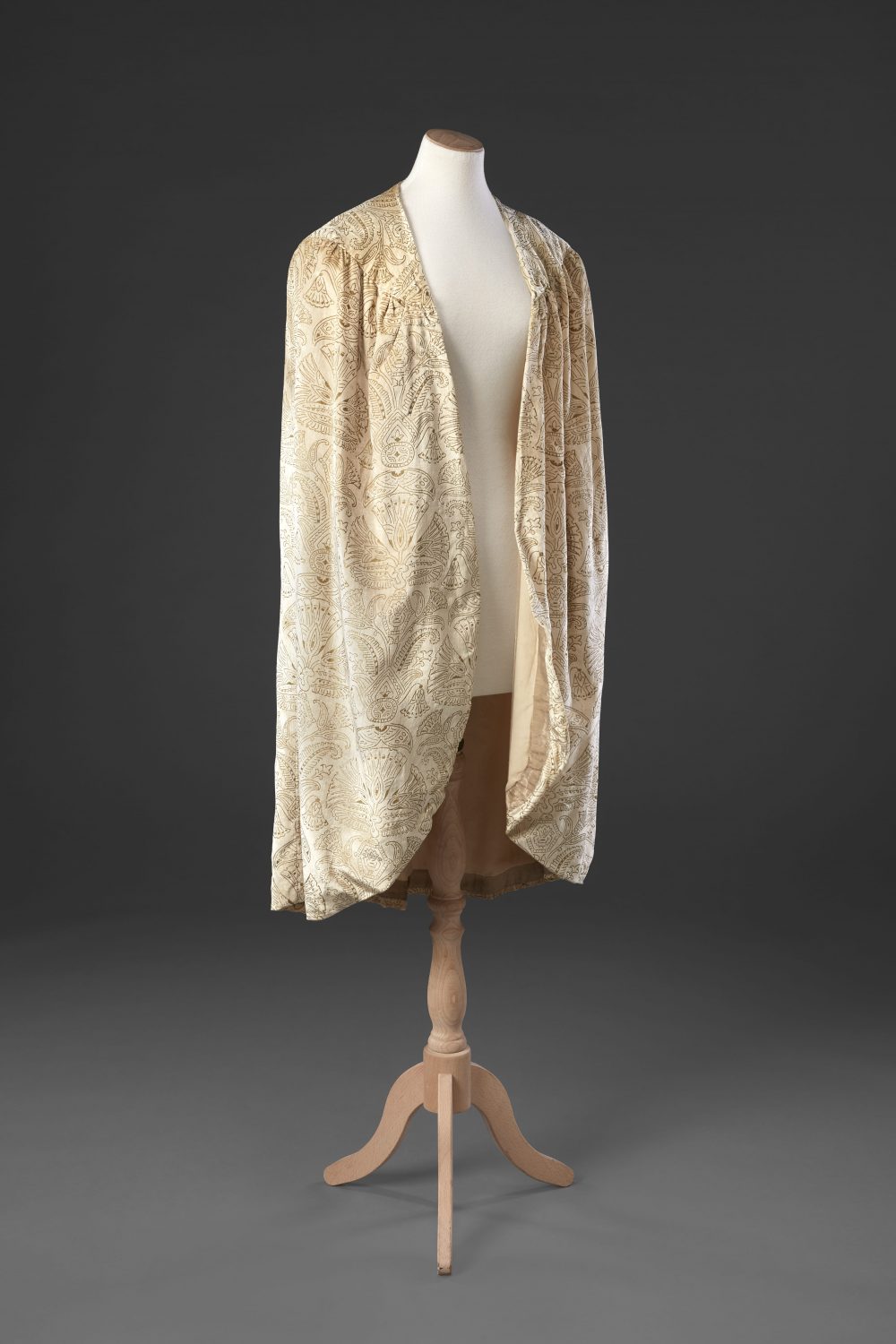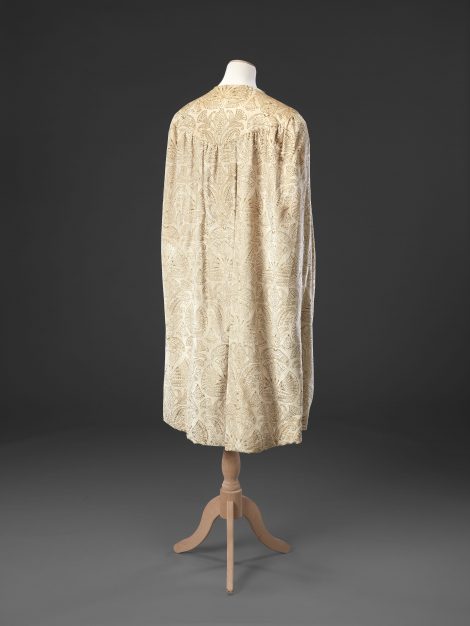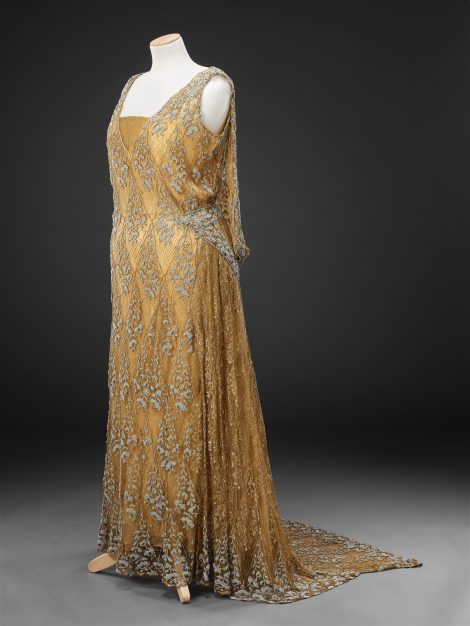Label ‘Rolland and Cie Couturier, 8 Rue Godot-de-Mauroy Paris’
The cloak, together with the evening dress seen as a Related Item, belonged to Princess Alice of Athlone, sister-in-law to Queen Mary. These garments, and a number of other royal items, came into the John Bright Collection from the Theatrical Ladies’ Guild, of which Princess Alice had been a patron. They were presented to the Guild by her daughter in order to raise funds for the charity.
The cloak was made by the Paris couture house Rolland et Cie, which had a branch in London, from cream velvet printed in gold with a design based on the lotus flower. The lotus flower, a water lily, was an important symbol in Eastern cultures, and was particularly associated in Western eyes with ancient Egypt. After Tutankhamun’s tomb in the Valley of the Kings was opened by the archaeologist Howard Carter in November 1922 sphinxes, pyramids, scarabs and other Egyptian motifs became all the rage in fashion and the decorative arts, their flat, angular, linear forms fitting in well with the Art Deco aesthetic.
In common with the other royal garments in this collection, the workmanship of the cloak is of the highest standard. It is lined with cream chiffon over crepe de chine, the curved hem bordered with a band of lamé.


